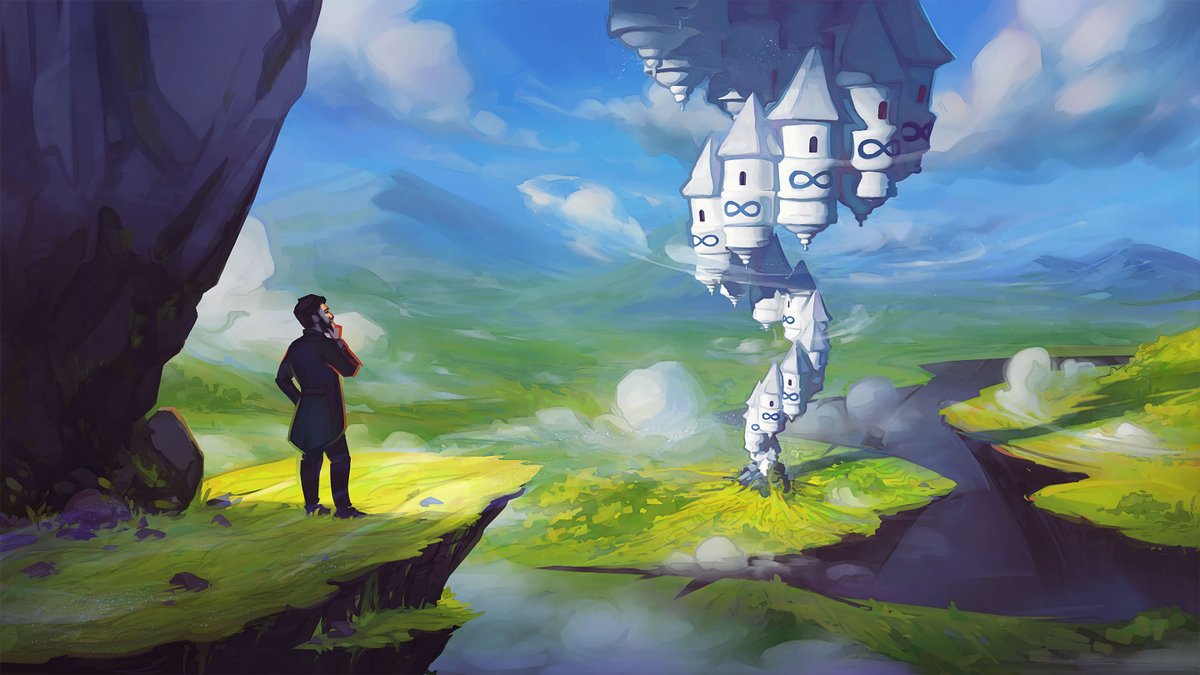
Illuminating math and science. Supported by @SimonsFdn. 2022 Pulitzer Prize in Explanatory Reporting.
3 subscribers
How to get URL link on X (Twitter) App



 Conway’s first love was geometry. In 1966, he discovered the symmetries of the Leech lattice, a 24-dimensional structure with lots of applications. Mathematicians later proved that it gave the densest possible way to pack spheres in 24-dimensional space — each sphere touches 196,560 others.
Conway’s first love was geometry. In 1966, he discovered the symmetries of the Leech lattice, a 24-dimensional structure with lots of applications. Mathematicians later proved that it gave the densest possible way to pack spheres in 24-dimensional space — each sphere touches 196,560 others.



 The universe is ruled by four forces:
The universe is ruled by four forces:

 In reinforcement learning, AI systems are trained to accomplish tasks using “reward” signals that steer them toward useful actions. In the 1980s, Barto and Sutton devised mathematical techniques that made this basic idea applicable to many different problems. 2/6 buff.ly/mLfJu3M
In reinforcement learning, AI systems are trained to accomplish tasks using “reward” signals that steer them toward useful actions. In the 1980s, Barto and Sutton devised mathematical techniques that made this basic idea applicable to many different problems. 2/6 buff.ly/mLfJu3M

 Tiny rocks, known as space or cosmic dust, speckle the otherwise empty space between planets and stars. Some float to Earth from hundreds of millions of miles away, falling to the ground as micrometeorites. Round and multicolored like tiny marbles, each bears
Tiny rocks, known as space or cosmic dust, speckle the otherwise empty space between planets and stars. Some float to Earth from hundreds of millions of miles away, falling to the ground as micrometeorites. Round and multicolored like tiny marbles, each bears



 What does it mean for nature’s fundamental building blocks to exist outside of space and time?
What does it mean for nature’s fundamental building blocks to exist outside of space and time? 



 It’s the early 1960s. Biologists are growing proteins into crystals, bombarding them with X-rays and measuring how the rays bend — a technique known as X-ray crystallography.
It’s the early 1960s. Biologists are growing proteins into crystals, bombarding them with X-rays and measuring how the rays bend — a technique known as X-ray crystallography.



 Over the millennia, our clever methods for timekeeping have included sundials, pendulums and strontium lattice clocks. Here’s how inventions to measure time have paralleled efforts to understand what time actually is:
Over the millennia, our clever methods for timekeeping have included sundials, pendulums and strontium lattice clocks. Here’s how inventions to measure time have paralleled efforts to understand what time actually is: 
 Millions of years ago, a massive volcanic plume propelled the Indian microcontinent into Eurasia, forming the Himalayas — or so the theory went. In this interview, geologist Lucía Pérez-Díaz explains how she disproved this theory.
Millions of years ago, a massive volcanic plume propelled the Indian microcontinent into Eurasia, forming the Himalayas — or so the theory went. In this interview, geologist Lucía Pérez-Díaz explains how she disproved this theory.



 The Langlands program seeks to assemble a mathematical dictionary that uses objects from calculus to investigate polynomials. An adjacent effort seeks to do something similar in geometric terms.
The Langlands program seeks to assemble a mathematical dictionary that uses objects from calculus to investigate polynomials. An adjacent effort seeks to do something similar in geometric terms. 

 There exist an infinite amount of “natural” numbers, like 1, 2 and 3, but Cantor proved that there are even more “real” numbers that sit between the natural numbers on the number line — most with never-ending digits, like 3.14159…. In other words, a larger infinity.
There exist an infinite amount of “natural” numbers, like 1, 2 and 3, but Cantor proved that there are even more “real” numbers that sit between the natural numbers on the number line — most with never-ending digits, like 3.14159…. In other words, a larger infinity. 